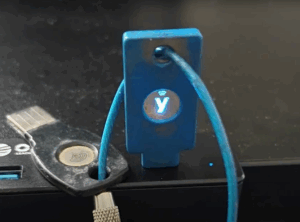The prevalence of cyber attacks has grown exponentially where virtually every aspect of our personal and professional lives relies on digital technologies. These attacks pose significant threats not only to individuals seeking to protect their personal information but also to businesses safeguarding proprietary data and governments defending national security interests. As cyber criminals become more sophisticated and their tactics more diverse, understanding the different types of cyber attacks becomes crucial for implementing effective cybersecurity measures. Without this understanding, individuals, organizations, and governments remain vulnerable to the potentially devastating consequences of data breaches, financial losses, operational disruptions, and reputational damage.
This comprehensive guide explores the most common cyber attacks and their methodologies. By understanding these threats in detail, individuals and organizations can gain insights into how cyber attackers exploit vulnerabilities in systems and networks. From phishing schemes that deceive unsuspecting users into divulging sensitive information to malware that infiltrates and compromises computer systems, each type of cyber attack targets specific weaknesses to achieve malicious objectives. Understanding these methodologies empowers stakeholders to adopt proactive measures that mitigate risks and enhance resilience against cyber threats.
Furthermore, this guide provides actionable preventive strategies aimed at strengthening defenses against cyber attacks. These strategies encompass a multi-layered approach that includes educating users about cybersecurity best practices, implementing robust authentication mechanisms, maintaining up-to-date software with timely patches, and deploying advanced security technologies such as firewalls and intrusion detection systems. By integrating these preventive measures into comprehensive cybersecurity frameworks, individuals, businesses, and governments can enhance their ability to detect, prevent, and respond to cyber threats effectively.
As the digital landscape continues to evolve and so our approach to cybersecurity. By arming yourselves with knowledge of cyber attack methodologies and implementing proactive preventive strategies, stakeholders can mitigate risks, protect sensitive information, and preserve the integrity of digital ecosystems upon which modern society depends.
Explore our Managed Service Offerings
Worcester’s Top Managed Service Provider
Types of Cyber Attacks
Cyber attacks encompass a broad range of malicious activities designed to compromise computer systems, networks, or data. Here are some of the most prevalent types:
Phishing Attacks
Phishing attacks involve fraudulent attempts to deceive individuals into disclosing sensitive information such as passwords, credit card numbers, or personal data. Typically, attackers masquerade as trustworthy entities through emails, messages, or websites, luring victims to click on malicious links or download infected attachments.
Malware
Malware, short for malicious software, refers to any software intentionally designed to cause damage to a computer, server, or network. Common types of malware include viruses, worms, Trojans, ransomware, and spyware. These programs can disrupt operations, steal sensitive information, or even render systems inoperable.
Denial-of-Service (DoS) and Distributed Denial-of-Service (DDoS) Attacks
DoS and DDoS attacks aim to overwhelm a network, server, or website with a flood of traffic, rendering it inaccessible to legitimate users. While DoS attacks originate from a single source, DDoS attacks utilize multiple compromised devices (botnets) to amplify the volume of malicious traffic, making them harder to mitigate.
Man-in-the-Middle (MitM) Attacks
MitM attacks occur when an attacker intercepts and potentially alters communication between two parties, unbeknownst to them. By eavesdropping on sensitive information exchanges, such as login credentials or financial transactions, attackers can exploit vulnerabilities in unsecured networks or compromised devices.
SQL Injection
SQL injection attacks exploit vulnerabilities in web applications that use SQL databases. Attackers inject malicious SQL code into input fields, tricking the application into executing unintended commands. This can lead to unauthorized access to databases, extraction of sensitive information, or even complete database compromise.
Zero-Day Exploits
Zero-day exploits target vulnerabilities in software or hardware that are unknown to the vendor or developer. Attackers exploit these vulnerabilities before they are patched or mitigated, making them particularly potent threats. Zero-day exploits can be used to launch various types of attacks, including malware infections or remote code execution.
Social Engineering Attacks
Social engineering attacks manipulate individuals into divulging confidential information or performing actions that compromise security. Techniques include pretexting, where attackers create a false narrative to extract information, and baiting, where malicious links or files are offered as incentives.
Discover Our Compliance Management Solutions
Worcester’s Leading Provider of Compliance Services
Preventive Strategies Against Cyber Attacks
Effective cybersecurity requires a multi-layered approach to mitigate the risk of cyber attacks. Here are essential strategies:
Education and Awareness
Educating users about the risks of cyber threats and promoting awareness of phishing tactics can significantly reduce the likelihood of successful attacks. Training programs should emphasize safe browsing habits, recognizing suspicious emails, and verifying the authenticity of requests for sensitive information.
Robust Authentication Mechanisms
Implementing strong authentication measures, such as multi-factor authentication (MFA), adds an additional layer of security beyond passwords. MFA requires users to verify their identity using multiple factors, such as passwords, biometrics, or tokens, reducing the risk of unauthorized access.
Regular Software Updates and Patch Management
Regularly updating software and applying security patches promptly is crucial for addressing known vulnerabilities and reducing the risk of exploitation by cyber attackers. Automated patch management systems can streamline this process and ensure timely updates across all devices and systems.
Network Security Measures
Deploying robust firewalls, intrusion detection systems (IDS), and intrusion prevention systems (IPS) can help detect and block unauthorized access attempts and malicious activities. Network segmentation and encryption of sensitive data in transit further strengthen defenses against cyber attacks.
Incident Response Planning
Developing and regularly testing an incident response plan enables organizations to swiftly detect, respond to, and recover from cyber attacks. This includes establishing clear roles and responsibilities, defining escalation procedures, and conducting post-incident analysis to improve future response efforts.
Backup and Recovery Procedures
Maintaining regular backups of critical data and systems ensures data integrity and availability in the event of a ransomware attack or data breach. Secure, offline backups stored in separate locations mitigate the risk of data loss due to cyber incidents.
As cyber threats continue to evolve in sophistication and frequency, organizations must remain vigilant and proactive in defending against cyber attacks. Understanding the different types of cyber attacks and implementing robust cybersecurity measures are fundamental steps towards safeguarding sensitive information, protecting operations, and preserving trust with stakeholders. By prioritizing cybersecurity best practices and fostering a culture of vigilance, organizations can effectively mitigate risks and adapt to the dynamic threat landscape of the digital age.
Discover our IT Solutions for Your Industry
Worcester’s Top Managed Service Provider
How Triton Technologies Can Help
Triton Technologies specializes in providing customized cybersecurity solutions designed to mitigate the risks posed by various cyber threats. Our expertise extends across a wide spectrum of cybersecurity domains, including threat detection, prevention, and incident response. Here’s how Triton Technologies can assist:
Comprehensive Cybersecurity Assessments
We conduct thorough cybersecurity assessments to identify vulnerabilities within your organization’s networks, systems, and processes. This proactive approach enables us to develop customized strategies to strengthen defenses against potential cyber attacks.
Implementation of Advanced Security Technologies
Triton Technologies deploys state-of-the-art security technologies, such as next-generation firewalls, intrusion detection and prevention systems (IDS/IPS), and advanced endpoint protection solutions. These technologies form a robust defense framework to detect and mitigate cyber threats in real-time.
Employee Training and Awareness Programs
We offer comprehensive training programs aimed at educating employees about cybersecurity best practices, including recognizing phishing attempts, safe browsing habits, and the importance of strong password management. By fostering a cybersecurity-aware culture within your organization, we help reduce the likelihood of successful cyber attacks.
Incident Response and Recovery Planning
In the event of a cyber security incident, Triton Technologies provides rapid incident response services to contain the threat, minimize damage, and facilitate timely recovery. Our incident response plans are tailored to your organization’s specific needs, ensuring a coordinated and effective response to cyber incidents.
Continuous Monitoring and Support
Our team provides 24/7 monitoring and support services to detect and respond to potential threats in real-time. We employ advanced threat intelligence and analytics to proactively identify emerging threats and vulnerabilities, enabling preemptive action to mitigate risks before they escalate.
As the digital landscape continues to evolve, proactive cybersecurity measures are essential to safeguarding sensitive information, maintaining operational continuity, and protecting organizational reputation. By partnering with Triton Technologies, organizations can leverage our expertise and comprehensive cybersecurity solutions to mitigate the risks posed by cyber attacks effectively. Together, we can enhance your cybersecurity posture, ensuring resilience against the dynamic and evolving threat landscape of today’s digital age. Contact us today.



